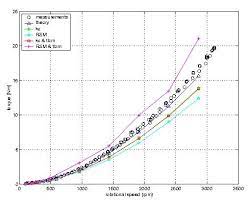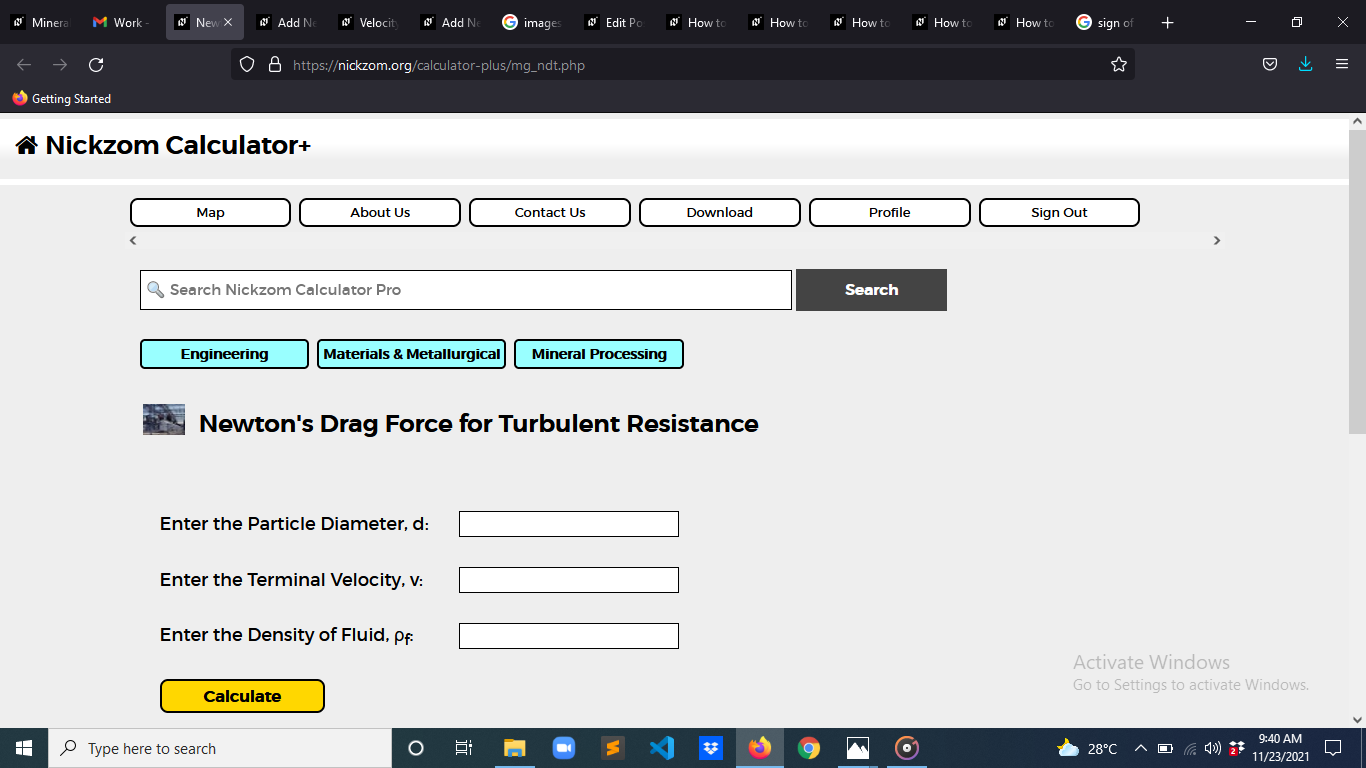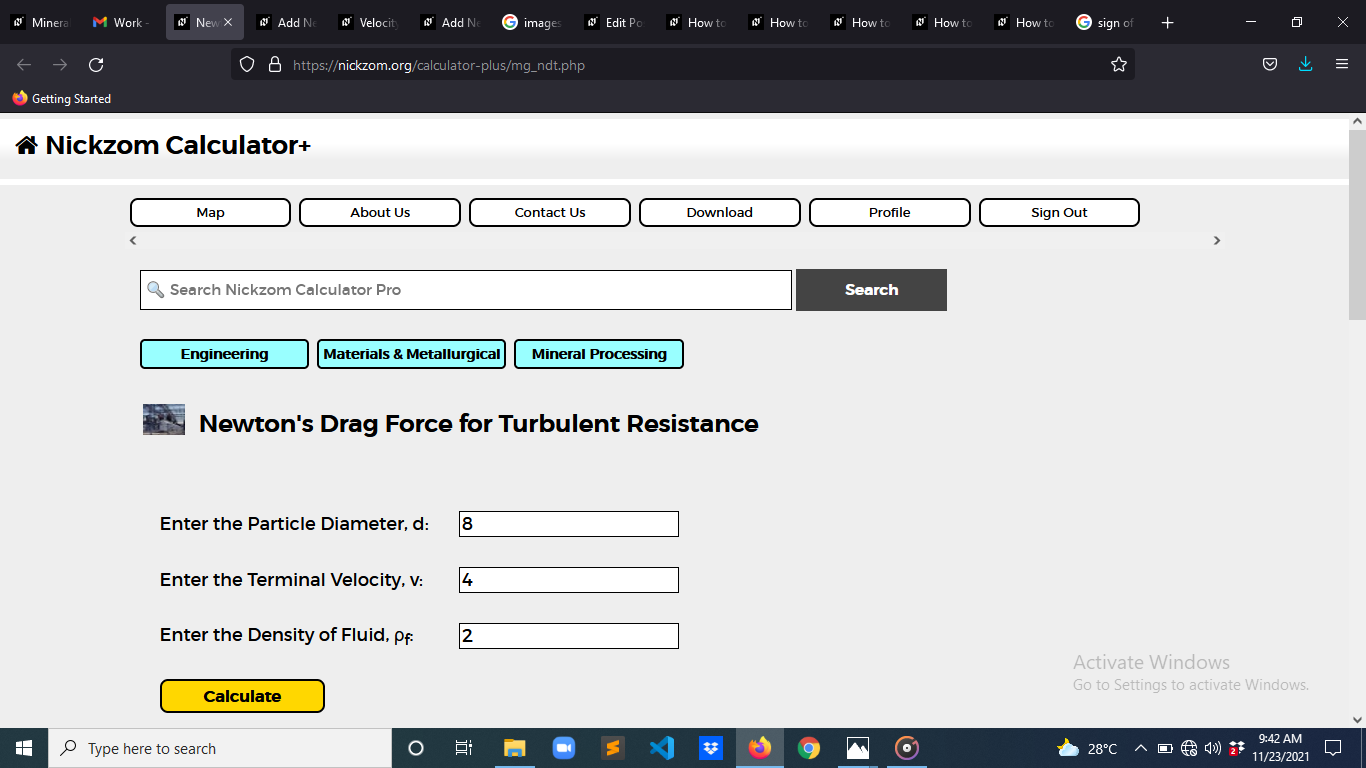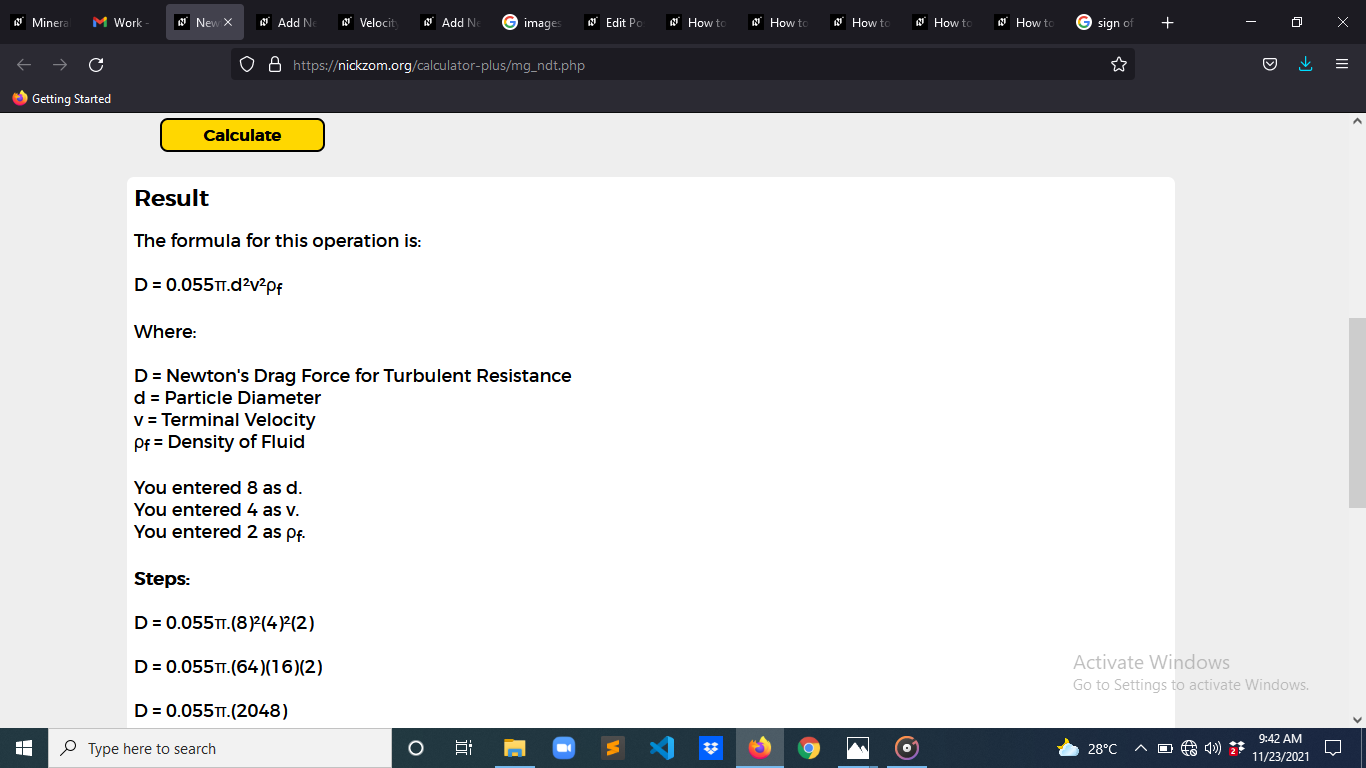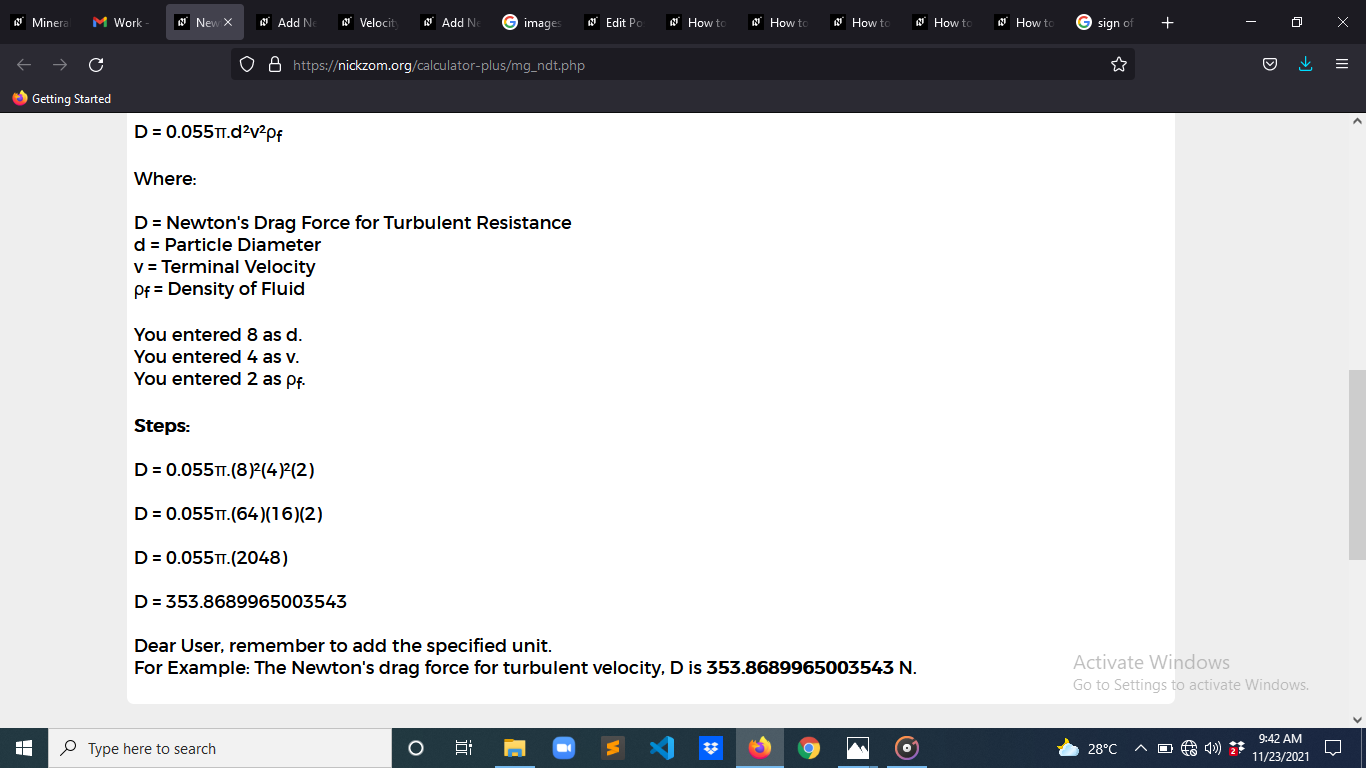How to Calculate and Solve for Newton’s Drag Force for Turbulent Resistance | Mineral Processing
Last Updated on May 17, 2024
The image above represents newton’s drag force for turbulent resistance. To calculate newton’s drag force for turbulent resistance, three essential parameters are needed and these parameters are Particle Diameter (d), Terminal Velocity (v) and Density of Fluid (ρf).
The formula for calculating newton’s drag force for turbulent resistance:
D = 0.055π.d²v²ρf
Where:
D = Newton’s Drag Force for Turbulent Resistance
d = Particle Diameter
v = Terminal Velocity
ρf = Density of Fluid
Let’s solve an example;
Find the newton’s drag force for turbulent resistance when the particle diameter is 8, the terminal velocity is 4 and the density of fluid is 2.
This implies that;
d = Particle Diameter = 8
v = Terminal Velocity = 4
ρf = Density of Fluid = 2
D = 0.055π.d²v²ρf
D = 0.055π.(8)²(4)²(2)
That is, D = 0.055π.(64)(16)(2)
D = 0.055π.(2048)
D = 353.86
Therefore, the newton’s drag force for turbulent resistance is 353.86 N.
Read more: How to Calculate and Solve for Velocity at Turbulent Flow | Mineral Processing
Calculating the Particle Diameter when the Newton’s Drag Force for Turbulent Resistance, the Terminal Velocity and the Density of Fluid are Given
d = √(D / 0.055π.v²ρf)
Where:
d = Particle Diameter
D = Newton’s Drag Force for Turbulent Resistance
v = Terminal Velocity
ρf = Density of Fluid
Let’s solve an example;
Find the particle diameter when the newton’s drag force for turbulent resistance is 42, the terminal velocity is 2 and the density of fluid is 4.
This implies that;
D = Newton’s Drag Force for Turbulent Resistance = 42
v = Terminal Velocity = 2
ρf = Density of Fluid = 4
d = √(D / 0.055π.v²ρf)
That is, d = √(42 / 0.055π.(2²)(4))
d = √(42 / 0.055π.16)
d = √(42 / 2.76)
So, d = √15.2
d = 3.89
Therefore, the particle diameter is 3.89.
Read more: How to Calculate and Solve for Velocity of Fine Particles | Mineral Processing
Calculating the Terminal Velocity when the Newton’s Drag Force for Turbulent Resistance, the Particle Diameter and the Density of Fluid are Given
v = √(D / 0.055π.d²ρf)
Where:
v = Terminal Velocity
D = Newton’s Drag Force for Turbulent Resistance
d = Particle Diameter
ρf = Density of Fluid
Let’s solve an example;
Find the terminal velocity when the newton’s drag force for turbulent resistance is 50, the particle diameter is 5 and the density of fluid is 2.
This implies that;
D = Newton’s Drag Force for Turbulent Resistance = 50
d = Particle Diameter = 5
ρf = Density of Fluid = 2
v = √(D / 0.055π.d²ρf)
Then, v = √(50 / 0.055π.(5²)(2))
v = √(50 / 0.055π.50)
v = √(50 / 8.64)
So, v = √5.78
v = 2.40
Therefore, the terminal velocity is 2.40.
Calculating the Density of Fluid when the Newton’s Drag Force for Turbulent Resistance, the Particle Diameter and the Terminal Velocity are Given
ρf = D / 0.055π.d²v²
Where:
ρf = Density of Fluid
D = Newton’s Drag Force for Turbulent Resistance
d = Particle Diameter
v = Terminal Velocity
Let’s solve an example;
Find the density of fluid when the newton’s drag force for turbulent resistance is 35, the particle diameter is 6 and the terminal velocity is 3.
This implies that;
D = Newton’s Drag Force for Turbulent Resistance = 35
d = Particle Diameter = 6
v = Terminal Velocity = 3
ρf = D / 0.055π.d²v²
This means, ρf = 35 / 0.055π.(6²)(3²)
ρf = 35 / 0.055π.(36)(9)
ρf = 35 / 0.055π.324
So, ρf = 35 / 55.9
ρf = 0.626
Therefore, the density of fluid is 0.626.
How to Calculate Newton’s Drag Force for Turbulent Resistance Using Nickzom Calculator
Nickzom Calculator – The Calculator Encyclopedia is capable of calculating the newton’s drag force for turbulent resistance.
To get the answer and workings of the newton’s drag force for turbulent resistance using the Nickzom Calculator – The Calculator Encyclopedia. First, you need to obtain the app.
You can get this app via any of these means:
Web – https://www.nickzom.org/calculator-plus
To get access to the professional version via web, you need to register and subscribe to have utter access to all functionalities.
You can also try the demo version via https://www.nickzom.org/calculator
Android (Paid) – https://play.google.com/store/apps/details?id=org.nickzom.nickzomcalculator
Android (Free) – https://play.google.com/store/apps/details?id=com.nickzom.nickzomcalculator
Apple (Paid) – https://itunes.apple.com/us/app/nickzom-calculator/id1331162702?mt=8
Once, you have obtained the calculator encyclopedia app, proceed to the Calculator Map, then click on Materials and Metallurgical under Engineering.
Now, Click on Mineral Processing under Materials and Metallurgical
Now, Click on Newton’s Drag Force for Turbulent Resistance under Mineral Processing
The screenshot below displays the page or activity to enter your values, to get the answer for the newton’s drag force for turbulent resistance according to the respective parameter which is the Particle Diameter (d), Terminal Velocity (v) and Density of Fluid (ρf).
Now, enter the values appropriately and accordingly for the parameters as required by the Particle Diameter (d) is 8, Terminal Velocity (v) is 4 and Density of Fluid (ρf) is 2.
Finally, Click on Calculate
As you can see from the screenshot above, Nickzom Calculator– The Calculator Encyclopedia solves for the newton’s drag force for turbulent resistance and presents the formula, workings and steps too.


